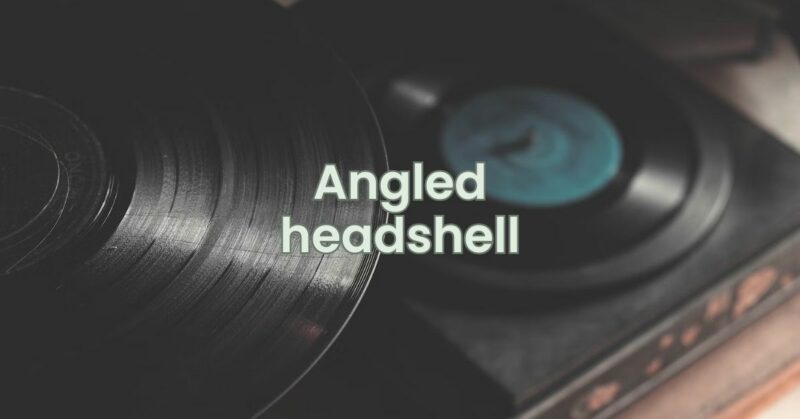Turntables have been a beloved medium for music enthusiasts seeking the warm and authentic sound of vinyl records. Among the various components that contribute to the turntable’s performance, the headshell plays a crucial role in holding the cartridge and stylus responsible for tracking the grooves on the record. Traditional headshells are typically straight, but some turntables feature an angled headshell design. In this article, we will explore the concept of the angled headshell, its advantages and disadvantages, and how it can impact the sound quality and performance of a turntable.
Understanding the Angled Headshell
An angled headshell refers to a design where the mounting surface for the cartridge is not parallel to the tonearm, but instead has a slight angle. This angle positions the cartridge and stylus at an offset to the tonearm’s axis, which can influence the alignment and geometry of the cartridge’s tracking path.
Advantages of the Angled Headshell:
- Improved Tangency: The angled headshell can facilitate improved tangency, which refers to the alignment of the cartridge stylus with the record grooves. By aligning the stylus at a specific angle relative to the tonearm’s pivot point, the cartridge can better follow the curves of the record groove, potentially reducing distortion and improving tracking accuracy.
- Better Alignment Adjustments: Some turntables with angled headshells allow for easier alignment adjustments. By changing the angle of the headshell, users can fine-tune the cartridge’s alignment to achieve optimal tracking and sound quality.
- Enhanced Soundstage: In some cases, an angled headshell design may contribute to a broader and more expansive soundstage, providing a more immersive listening experience.
Disadvantages of the Angled Headshell:
- Limited Compatibility: Turntables with angled headshells may have limited compatibility with certain cartridges. Some cartridges are designed for use with straight headshells, and using them with an angled headshell can lead to alignment and tracking issues.
- Complexity in Setup: Setting up a turntable with an angled headshell may be more complex and time-consuming than setting up a turntable with a straight headshell. Precise alignment is crucial to optimize performance, and adjustments may require greater attention to detail.
- Increased Cartridge Wear: The offset angle introduced by the angled headshell may increase lateral forces on the cartridge and stylus. This can potentially lead to increased wear on the stylus and vinyl records, especially if the alignment is not accurately set.
Impact on Sound Quality:
The impact of an angled headshell on sound quality can vary depending on the specific turntable, cartridge, and individual preferences of the listener. Some users may find that the improved tangency and alignment adjustments lead to a more accurate and detailed sound reproduction. Others may not notice a significant difference or may prefer the simplicity and compatibility of a traditional straight headshell setup.
Conclusion:
The angled headshell is a design feature found in some turntables, offering potential benefits in terms of improved tangency and alignment adjustability. However, it is essential to consider compatibility with cartridges and the complexity of setup before choosing a turntable with an angled headshell. While some users may appreciate the potential sound quality improvements, others may prefer the straightforward setup and broader cartridge compatibility of traditional straight headshell designs. Ultimately, the choice between angled and straight headshells comes down to personal preference, setup capabilities, and the desire to fine-tune the turntable for the best possible vinyl listening experience.


